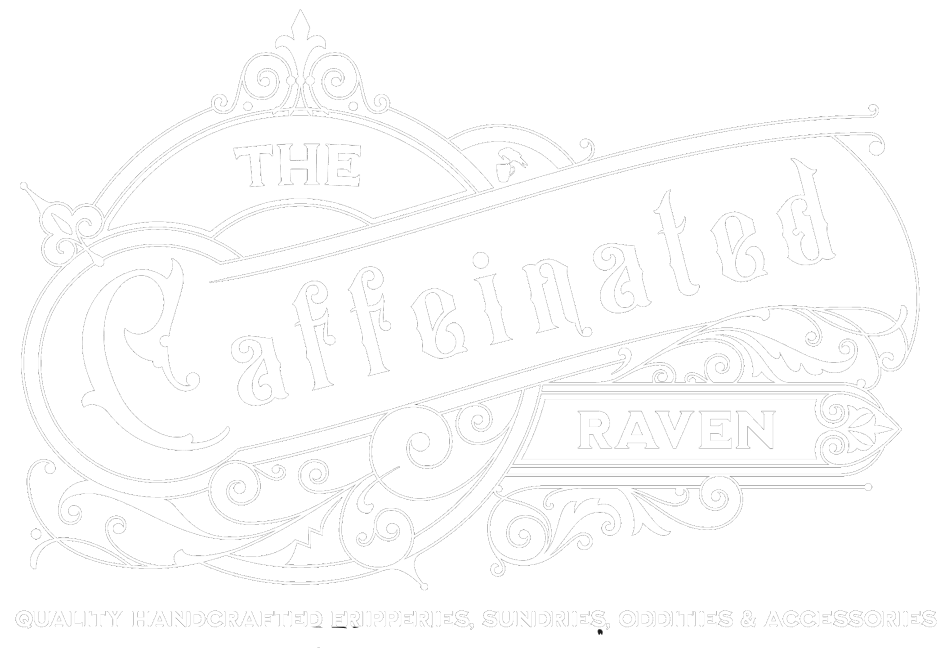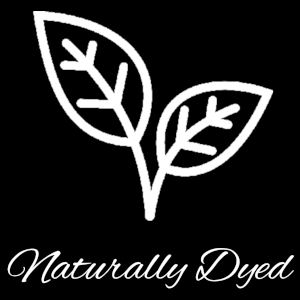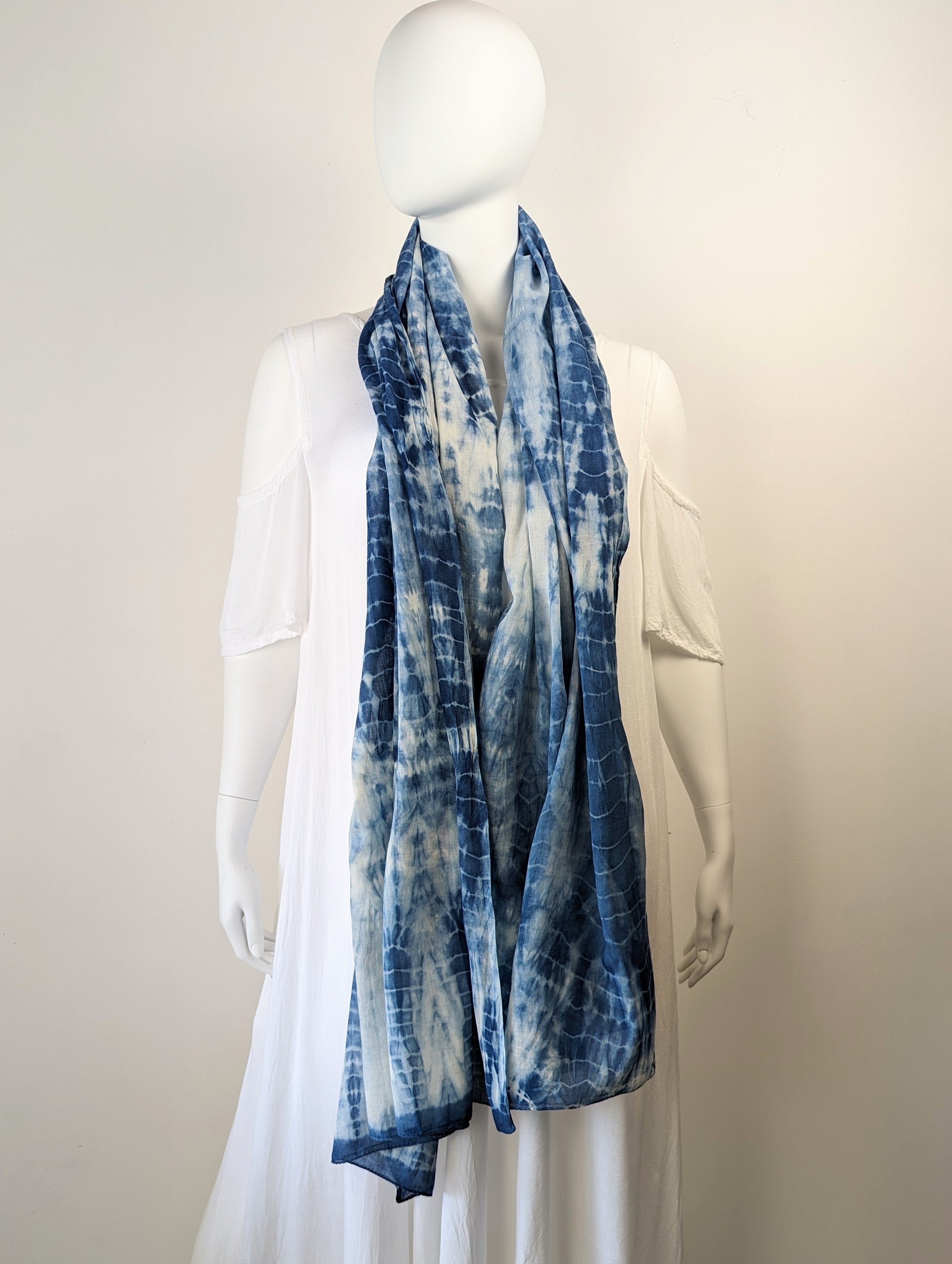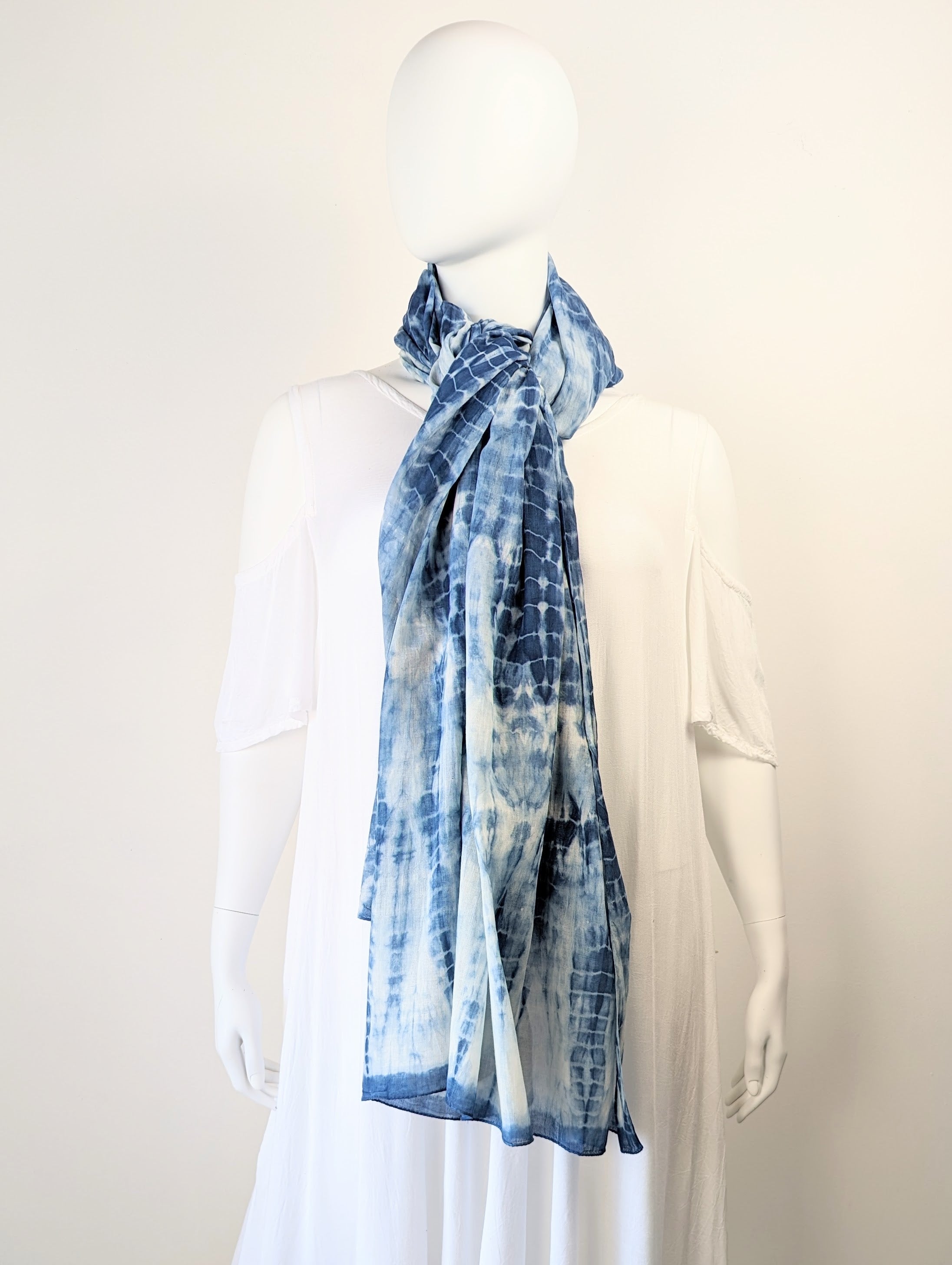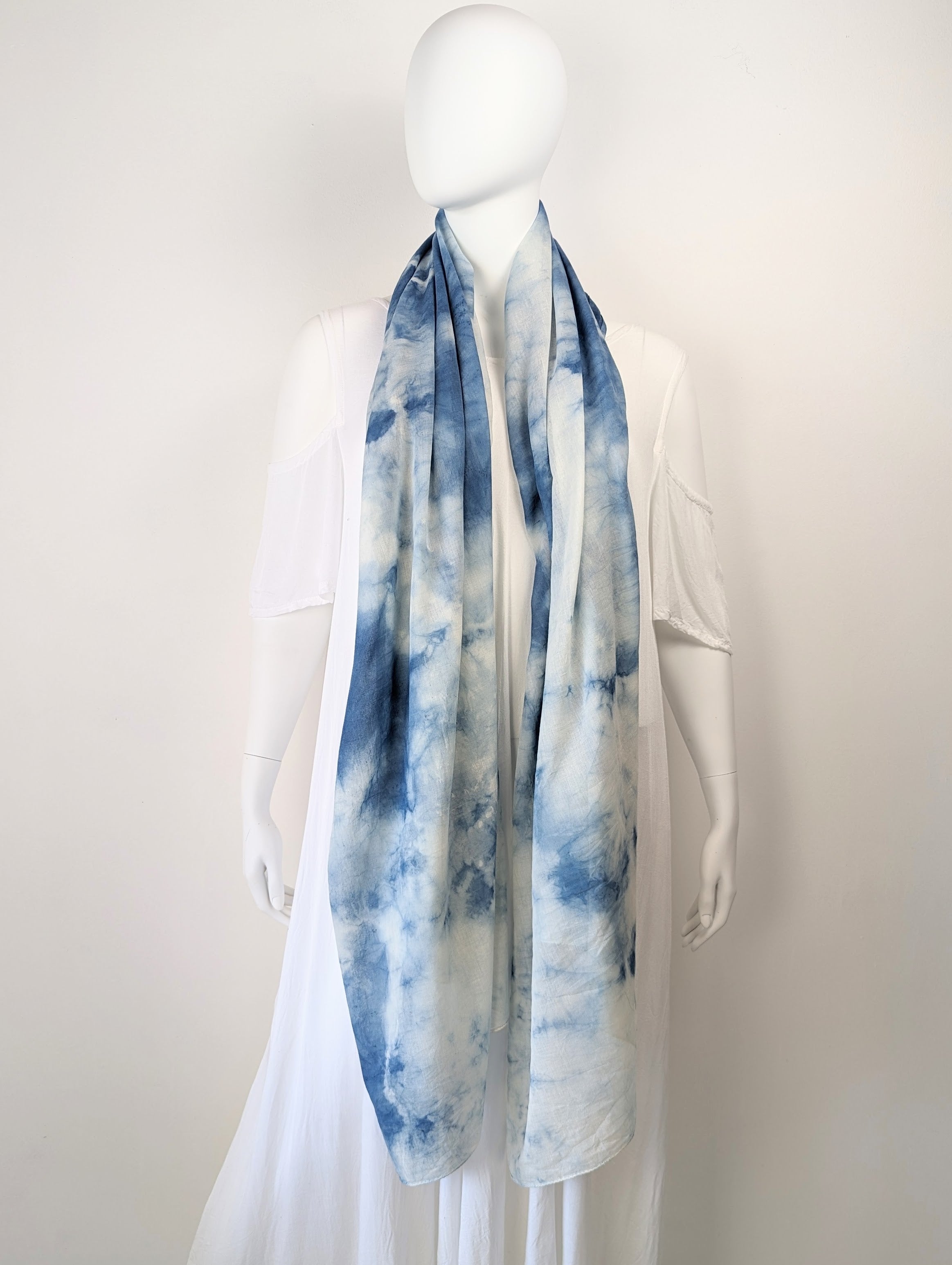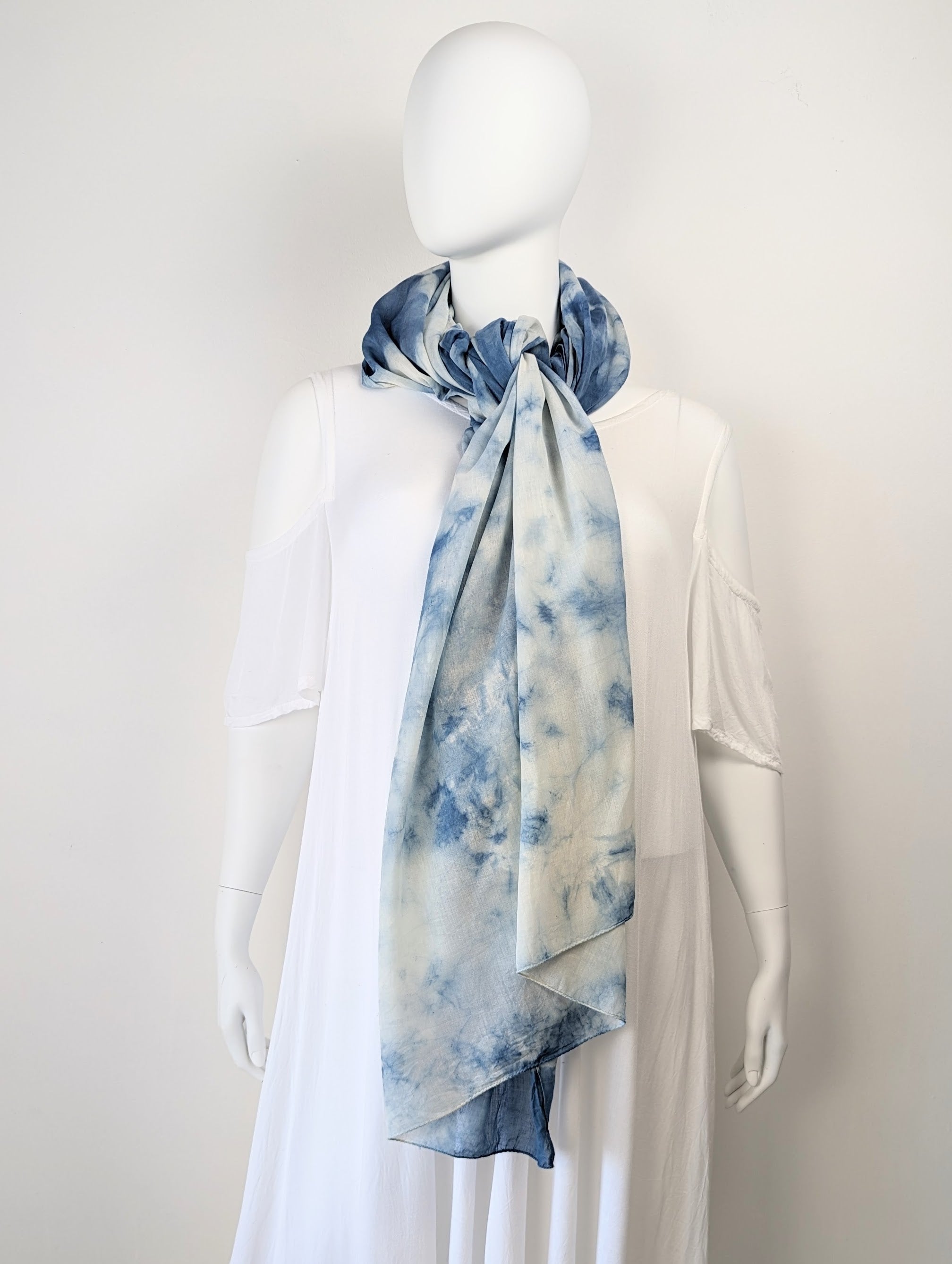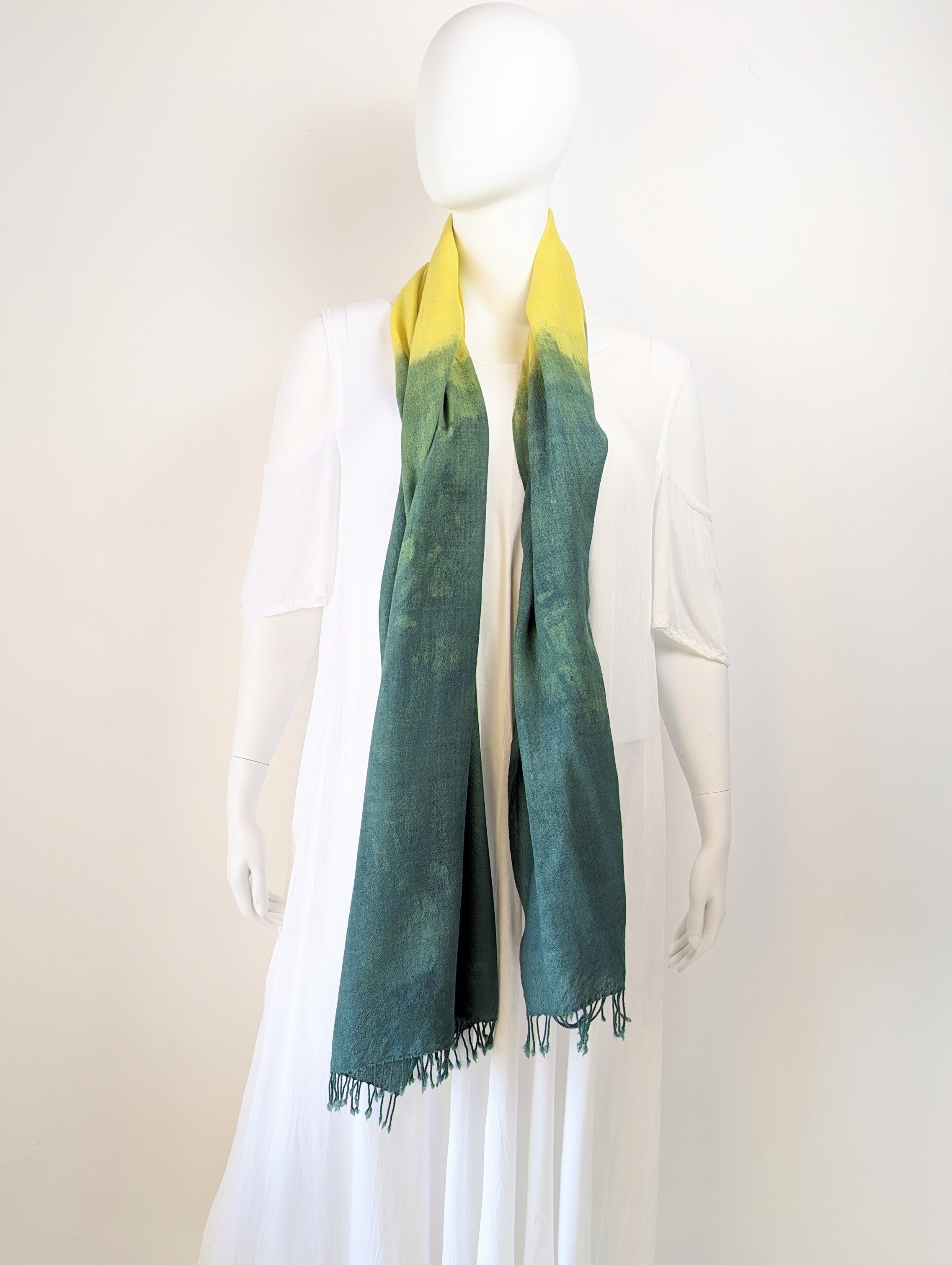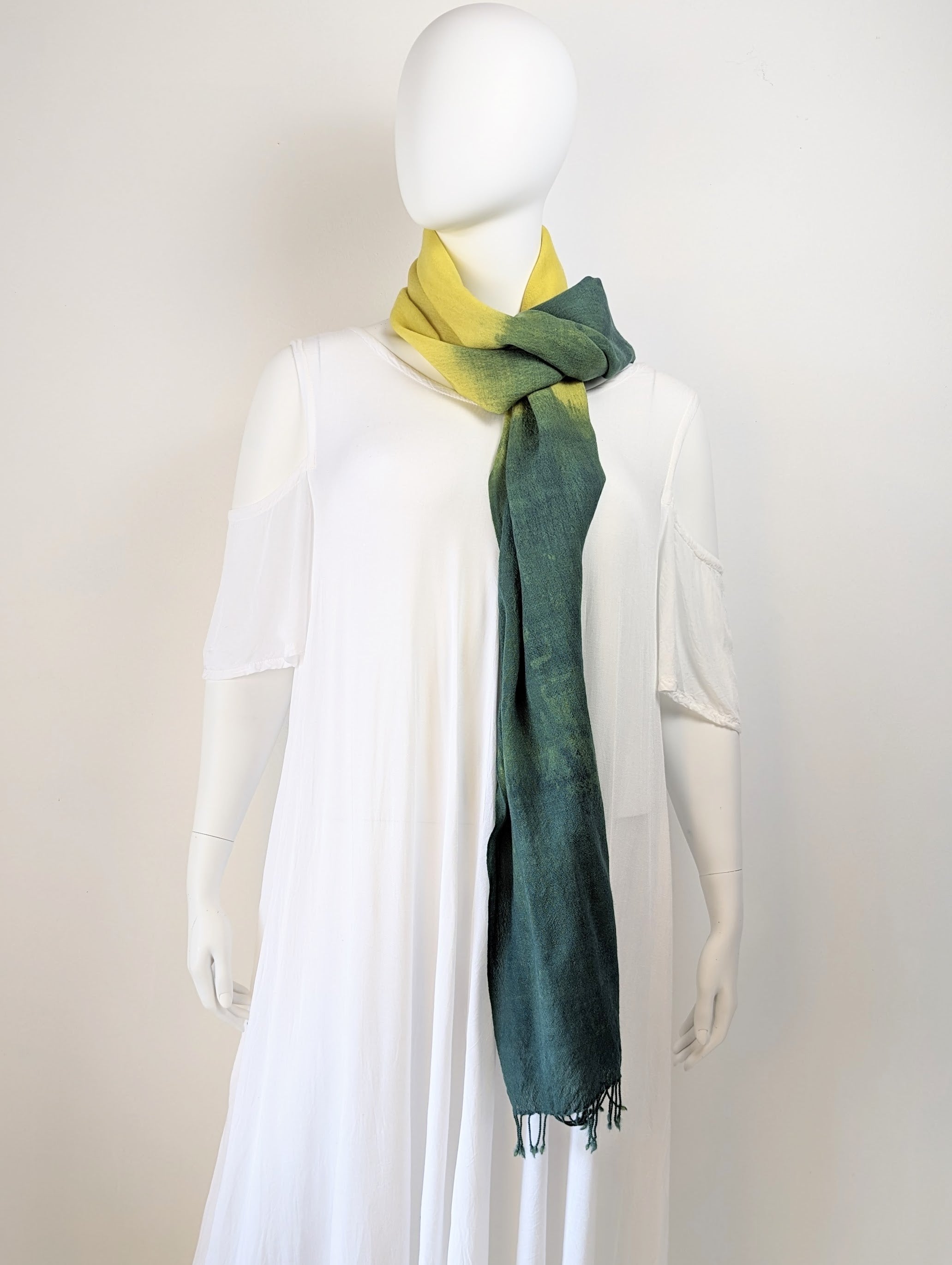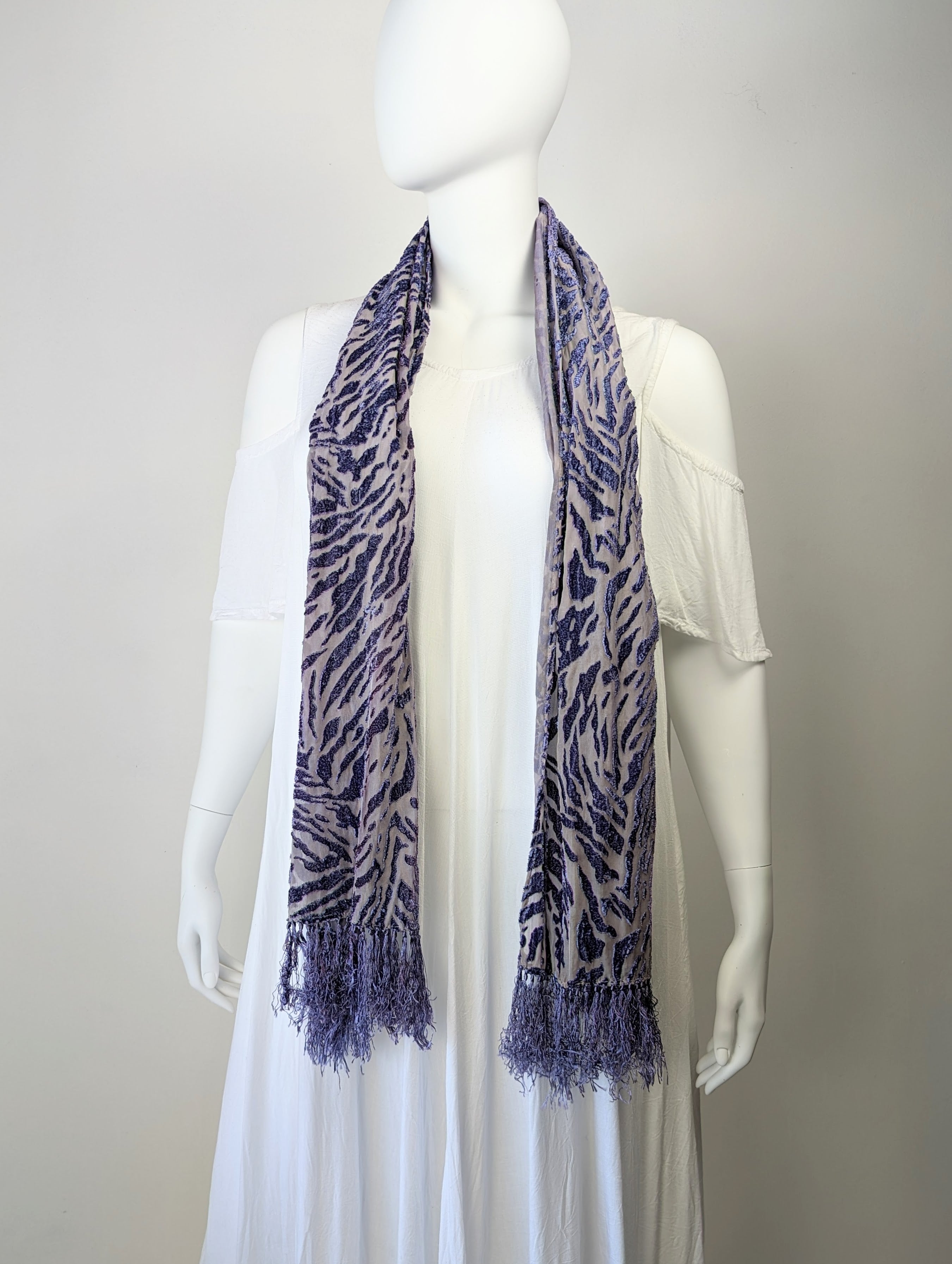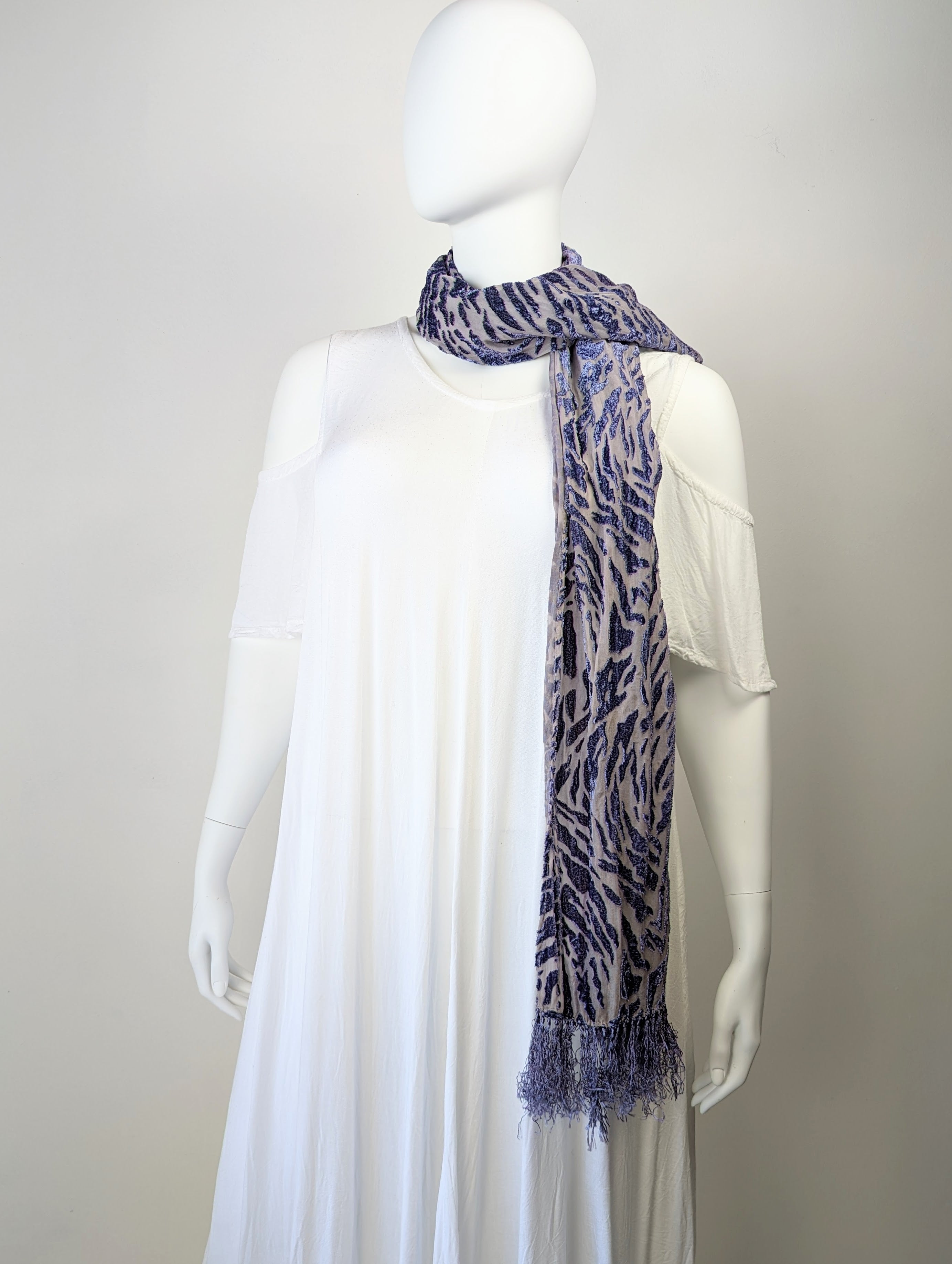NATURAL DYEING
Dyeing wool, cloth or a garment with natural dyes is not as easy as it is with procion or other chemical dyes. There are many steps involved before the dye pot is even mixed.
To begin with, not all fibres are the same. Some such as cotton and rayon are derived from plant or cellulose sources, while wool and silk are sourced from animal or protein sources. Cellulose and protein fibres must be pre-treated, handled, dyed and washed differently.
In order for fibres to accept dyes, they must be scoured (cleaned thoroughly to remove any sizing or oils left over from manufacturing), and mordanted, that is treated with a substance such as alum to allow the dye to bond with the fabric. In the case of cellulose fibres, a tannin must be introduced to the fibres before the mordanting process, to allow the mordant to adhere (which in turn will allow the dye to adhere).
Each of our naturally dyed garments has been treated with at least 2 processes, by hand, before the dye pot; as well, some of the better natural, ethically sourced dyestuffs can be more costly than procion or other chemical dyes. As a result the finished products can cost more than some of our other items. We would argue that the natural beauty of the dyes and the environmentally friendly processes are more than worth it.
A few of the natural dyes we use:
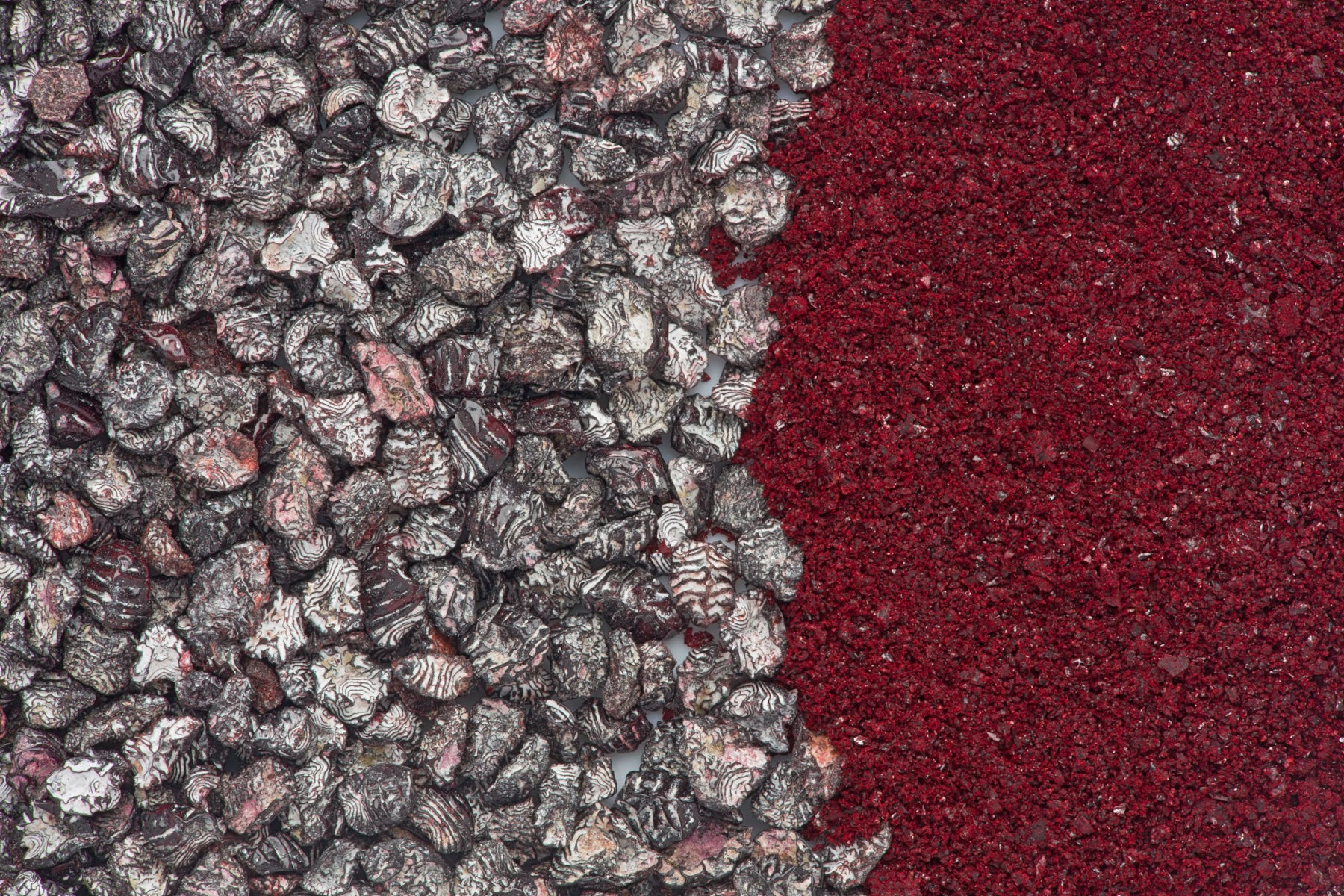
COCHINEAL
Cochineal is a dye harvested from a type of cactus parasite known as Dactylopius coccus. The female cochineal beetle in particular, produces a concentrated amount of carminic acid, from which carmine is derived. It has been used by the Indigenous peoples of Mexico and South America for thousands of years.
At at nopalry (cactus farm), female cochineal beetles are encouraged to infect the host cacti. After approximately 90 days, they are harvested by hand by picking or brushing them off. The process is incredibly labour intensive, which makes cochineal a more costly dye.
The insects are dried and pulverized, making a very concentrated red dye. It is commonly used as textile dye, in cosmetics, as a natural food colouring and as a histological preparatory stain for the examination of tissues and carbohydrates.
Cochineal is sought after for its lightfastness, the concentration of colour (which requires less of the raw materials as compared to other natural dyes) and the rainbow of shades it can produce. The solution pH directly affects the colour; more basic solutions produce deeper crimson and purple shades, whereas the introduction of acid shifts the batch to a brighter pink and even orange.
Although cochineal is a natural dyestuff, it is important to add that it is not considered vegetarian or vegan, and (especially in food and cosmetics) is not allowed in certain faiths due to being derived from insects.
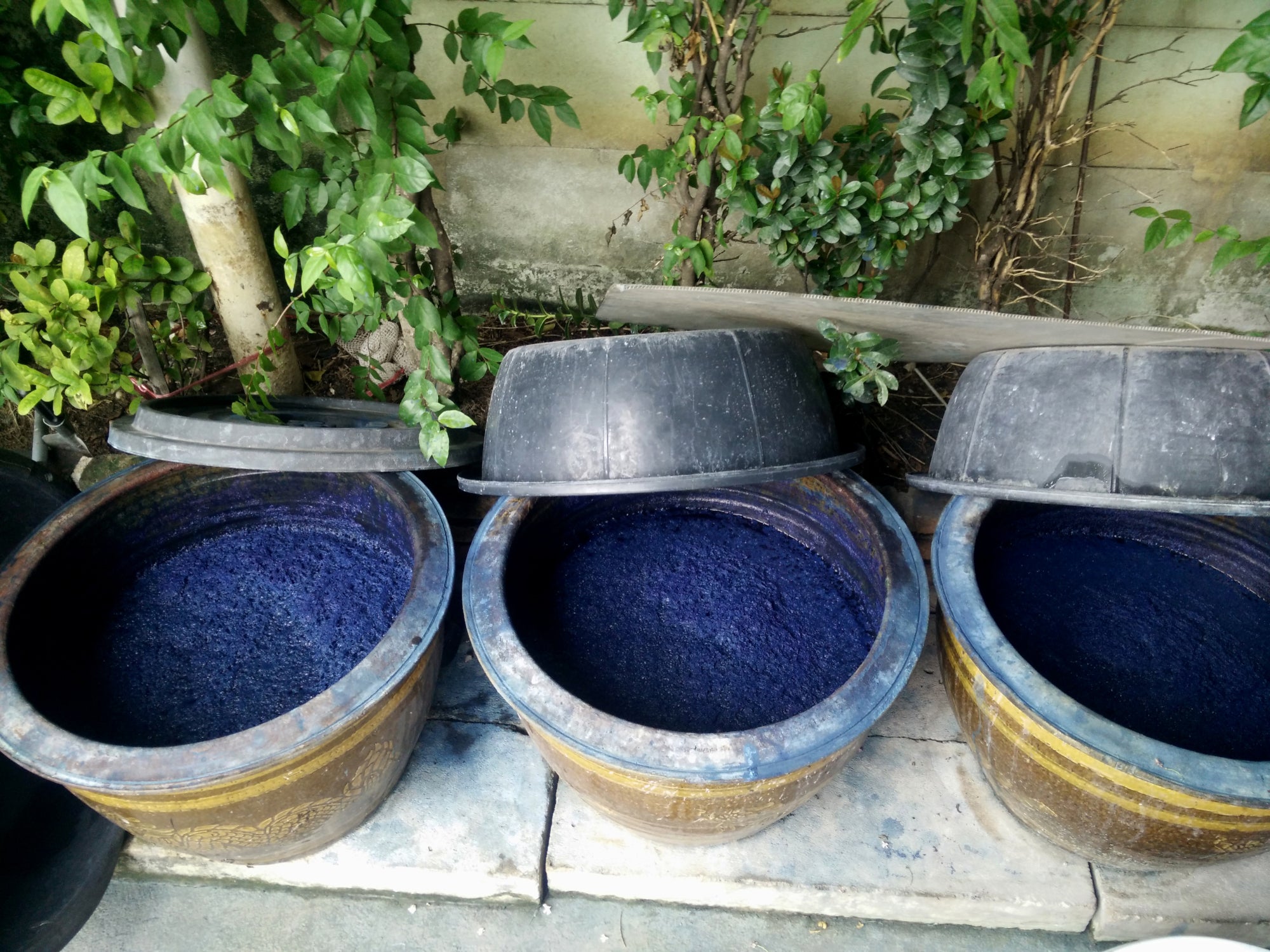
INDIGO
Indigofera tinctoria and similar plants have been cultivated since antiquity by cultures all over the world. The leaves are harvested and fermented in water.
The sludge that remains is either formed into cakes, balls or slabs (which can also be ground to powder)
Indigo is not water soluble. In order to create an indigo vat, you must add a reduction agent to remove much of the oxygen, and reduce the pH to basic. Reducers range from natural sugars, to other dyes or plants, or specialized chemical compounds. To make the solution alkaline, calcium hydroxide (also known as pickling lime, lime or hydrated lime) or soda ash are added. Lye can also be used, but is highly caustic and therefore not used on our products.
Wet cloth or yarn is introduced into the vat slowly as to avoid bubbles which could oxidize the vat. Once the indigo has been sufficiently absorbed, the cloth is carefully removed and wrung for the same reason.
The cloth that is removed from the vat is green; once the cloth has sufficiently been exposed to oxygen, the colour will turn to indigo blue. In order for darker shades to be produced, this step must be repeated many times.
The now dyed fabric will be rinsed, washed, resists removed, dried and ironed. Depending on the final piece, it may be then cut, sewn and treated like any other fabric. In the case of a finished dyed garment, it is ready to wear!
Indigo is used world wide on many fabrics and articles of clothing, including jeans. Once the indigo water has been fully oxidized and no longer useful for dyeing, it is compostable. Many places around the world recycle their oxidized indigo for crops.
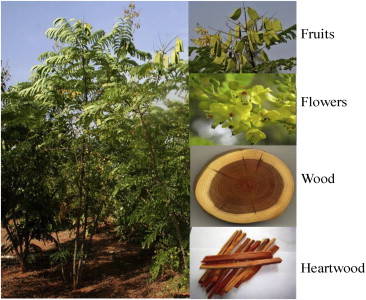
Eastern Brazilwood (sappanwood)
Brazilwood originally came from the heartwood of the Cæsalpinia echinata tree, a legume, which is native to the Brazilian coastline. This tree was harvested, then over harvested for the dyestuff that was commonly known as brazilian. Indeed, the country of Brazil gets its name from these trees.
Eastern Brazilwood, or sappanwood, comes from the Caesalpinia sappanplant, which is found throughout east Asia. It is also known as Indian redwood. The plant itself has antibacterial, antimicrobial and anticoagulant properties and is often used in folk medicine.
Sappanwood is very sensitive to pH, and as a result the colour can be manipulated from a bright orange to a berry red and even purple.
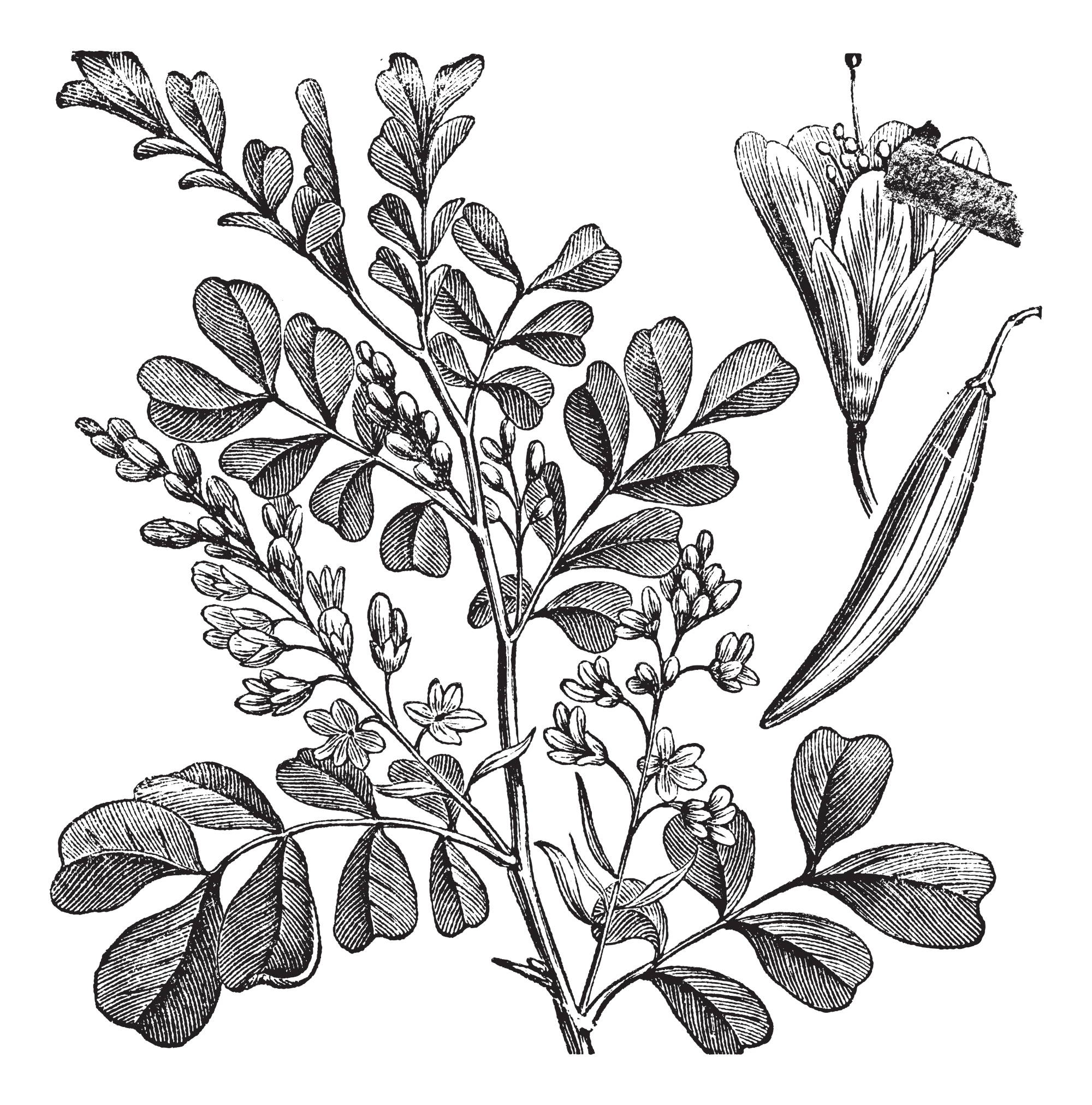
Logwood
Also known as blackwood, bloodwood, campeachy or Jamaica wood, the heartwood of Logwood (Haematoxylum campechianum) has been used for centuries for dyeing. Originally from Mexico, it was exported to colonies in the Caribbean and Central America and heavily logged for European dyestuffs from the 17th to 19th centuries. Once highly sought after, it was often targeted and stolen as many other costly goods during the golden age of piracy.
Logwood chips are still used in medicine and histology for staining, and was once a staple in pH testing, as the natural brown colour will turn yellow red under acidic conditions and purple when introduced to alkaline.
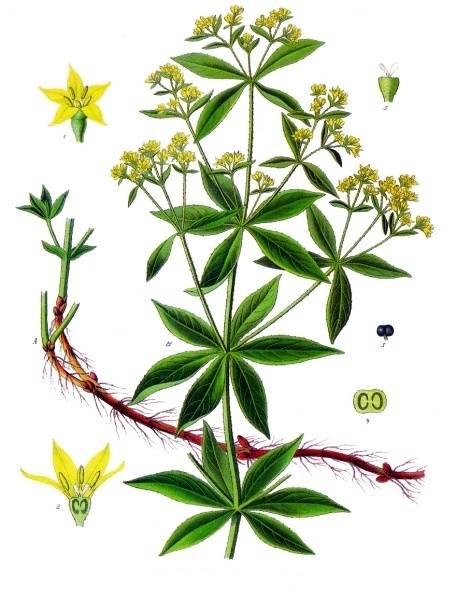
MADDER
Madder, also known as rose madder, dyers madder, Turkey red, or common madder, is sourced from the roots of rubia tinctorum, a plant belonging to the bedstraw and coffee family. It has been used for milennia to dye leather, wool, cotton and silk in Europe and the Near East. It has also been used in herbal medicine. It is currently cultivated and grows wild through India, Asia, Turkey, China, Africa, Japan and Australia.
When heat and pH are manipulated, the range of colour that can be produced is astounding; Turkey red being the most famous, but madder alone can also produce mulberry, orange red, terracotta and coral.
